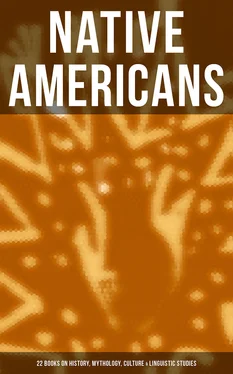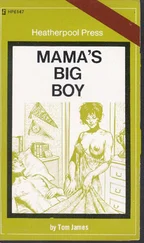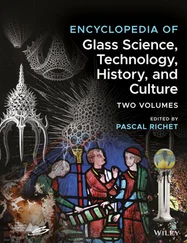Besides the permanent home for the Seminole family, there is also the lodge which it occupies when for any cause it temporarily leaves the house. The lodges, or the temporary structures which the Seminole make when “camping out,” are, of course, much simpler and less comfortable than their houses. I had the privilege of visiting two “camping” parties—one of forty-eight Indians, at Tak-o-si-mac-la’s cane field, on the edge of the Big Cypress Swamp; the other of twenty-two persons, at a Koonti ground, on Horse Creek, not far from the site of what was, long ago, Fort Davenport.
I found great difficulty in reaching the “camp” at the sugar cane field. I was obliged to leave my conveyance some distance from the island on which the cane field was located. When we arrived at the shore of the saw-grass marsh no outward sign indicated the presence of fifty Indians so close at hand; but suddenly three turbaned Seminole emerged from the marsh, as we stood there. Learning from our guide our business, they cordially offered to conduct us through the water and saw-grass to the camp. The wading was annoying and, to me, difficult; but at length we secured dry footing in the jungle on the island, and after a tortuous way through the tangled vegetation, which walled in the camp from the prairie, we entered the large clearing and the collection of lodges where the Indians were. These lodges, placed very close together and seemingly without order, were almost all made of white cotton cloths, which were each stretched over ridge poles and tied to four corner posts. The lodges were in shape like the fly of a wall tent, simply a sheet stretched for a cover.
At a Koonti ground on Horse Creek I met the Cat Fish Lake Indians. They had been forced to leave their homes to secure an extra supply of Koonti flour, because, as I understood the woman who told me, some animals had eaten all their sweet potatoes. The lodges of this party differed from those of the southern Indians in being covered above and around with palmetto leaves and in being shaped some like wall tents and others like single-roofed sheds. The accompanying sketch shows what kind of a shelter Täl-la-häs-ke had made for himself fit Horse Creek. ( Fig. 67.)

Fig. 67. Temporary dwelling.
Adjoining each of these lodges was a platform, breast high. These were made of small poles or sticks covered with, the leaves of the palmetto. Upon and under these, food, clothing, and household utensils, generally, were kept; and between the rafters of the lodges and the roofs, also, many articles, especially those for personal use and adornment, were stored.
Table of Contents
Having now seen the formation of the Seminole family and taken a glance at the dwellings, permanent and temporary, which it occupies, we are prepared to look at its household life. I was surprised by the industry and comparative prosperity and, further, by the cheerfulness and mutual confidence, intimacy, and affection of these Indians in their family intercourse.
The Seminole family is industrious. All its members work who are able to do so, men as well as women. The former are not only hunters, fishermen, and herders, but agriculturists also. The women not only care for their children and look after the preparation of food and the general welfare of the home, but are, besides, laborers in the fields. In the Seminole family, both, husband and wife are land proprietors and cultivators. Moreover, as we have seen, all children able to labor contribute their little to the household prosperity. From these various domestic characteristics, an industrious family life almost necessarily follows. The disesteem in which Tûs-ko-na, a notorious loafer at the Big Cypress Swamp, is held by the other Indians shows that laziness is not countenanced among the Seminole.
But let me not be misunderstood here. By a Seminole’s industry I do not mean the persistent and rapid labor of the white man of a northern community. The Indian is not capable of this, nor is he compelled to imitate it. I mean only that, in describing him, it is but just for me to say that he is a worker and not a loafer.
As a result of the domestic industry it would be expected that we should find comparative prosperity prevailing among all Seminole families; and this is the fact. Much of the Indian’s labor is wasted through his ignorance of the ways by which it might be economized. He has no labor saving or labor multiplying machines. There is but little differentiation of function in either family or tribe. Each worker does all kinds of work. Men give themselves to the hunt, women to the house, and both to the field. But men may be found sometimes at the cooking pot or toasting stick and women may be seen taking care of cattle and horses. Men bring home deer and turkeys, &c.; women spend days in fishing. Both men and women are tailors, shoemakers, flour makers, cane crushers and sirup boilers, wood hewers and bearers, and water carriers. There are but few domestic functions which may be said to belong exclusively, on the one hand, to men, or, on the other, to women.
Out of the diversified domestic industry, as I have said, comes comparative prosperity. The home is all that the Seminole family needs or desires for its comfort. There is enough clothing, or the means to get it, for every one. Ordinarily more than a sufficient quantity of clothes is possessed by each member of a family. No one lacks money or the material with which to obtain that which money purchases. Nor need any ever hunger, since the fields and nature offer them food in abundance. The families of the northern camps are not as well provided for by bountiful nature as those south of the Caloosahatchie River. Yet, though at my visit to the Cat Fish Lake Indians in midwinter the sweet potatoes were all gone, a good hunting ground and fertile fields of Koonti were near at hand for Tcup-ko’s people to visit and use to their profit.
Table of Contents
Read the bill of fare from which the Florida Indians may select, and compare with that the scanty supplies within reach of the North Carolina Cherokee or the Lake Superior Chippewa. Here is a list of their meats: Of flesh, at any time venison, often opossum, sometimes rabbit and squirrel, occasionally bear, and a land terrapin, called the “gopher,” and pork whenever they wish it. Of wild fowl, duck, quail, and turkey in abundance. Of home reared fowl, chickens, more than they are willing to use. Of fish, they can catch myriads of the many kinds which teem in the inland waters of Florida, especially of the large bass, called “trout” by the whites of the State, while on the seashore they can get many forms of edible marine life, especially turtles and oysters. Equally well off are these Indians in respect to grains, vegetables, roots, and fruits. They grow maize in considerable quantity, and from it make hominy and flour, and all the rice they need they gather from the swamps. Their vegetables are chiefly sweet potatoes, large and much praised melons and pumpkins, and, if I may classify it with vegetables, the tender new growth of the tree called the cabbage palmetto. Among roots, there is the great dependence of these Indians, the abounding Koonti; also the wild potato, a small tuber found in black swamp land, and peanuts in great quantities. Of fruits, the Seminole family may supply itself with bananas, oranges (sour and sweet), limes, lemons, guavas, pineapples, grapes (black and red), cocoa nuts, cocoa plums, sea grapes, and wild plums. And with even this enumeration the bill of fare is not exhausted. The Seminole, living in a perennial summer, is never at a loss when he seeks something, and something good, to eat. I have omitted from the above list honey and the sugar cane juice and sirup, nor have I referred to the purchases the Indians now and then make from the white man, of salt pork, wheat flour, coffee, and salt, and of the various canned delicacies, whose attractive labels catch their eyes.
Читать дальше













